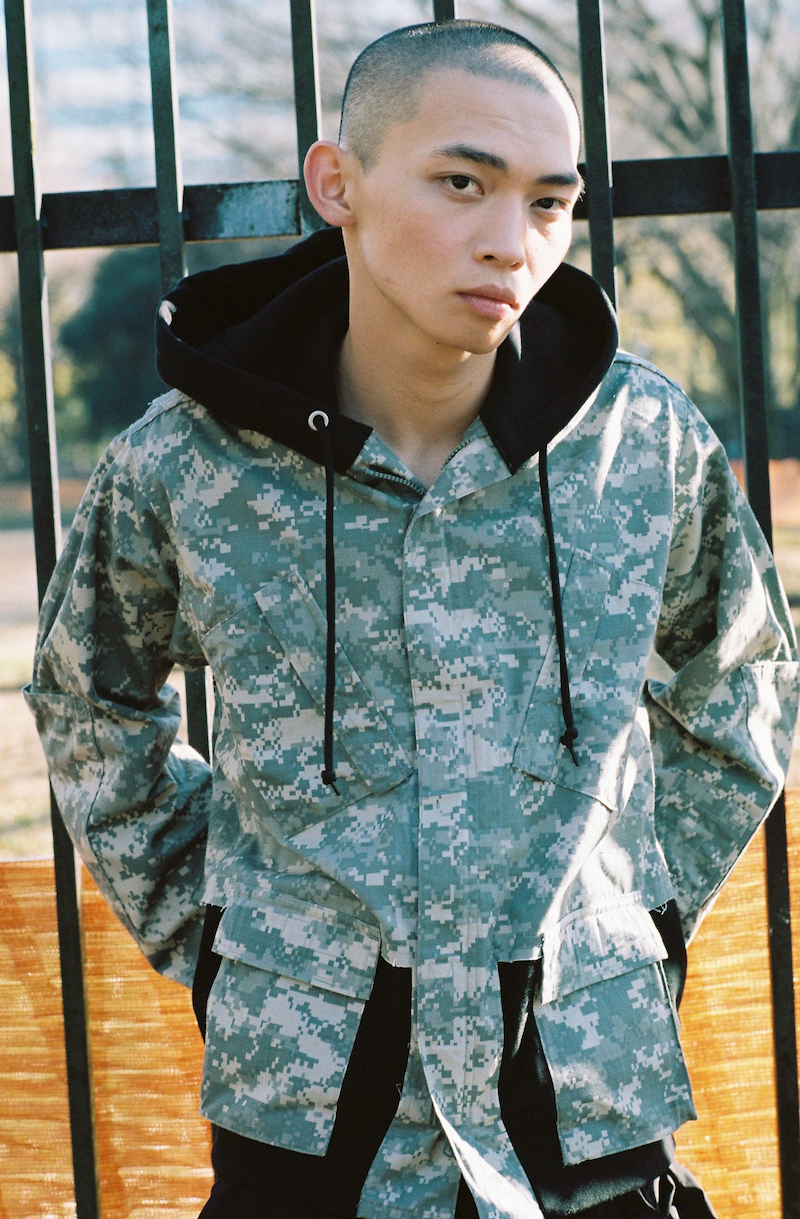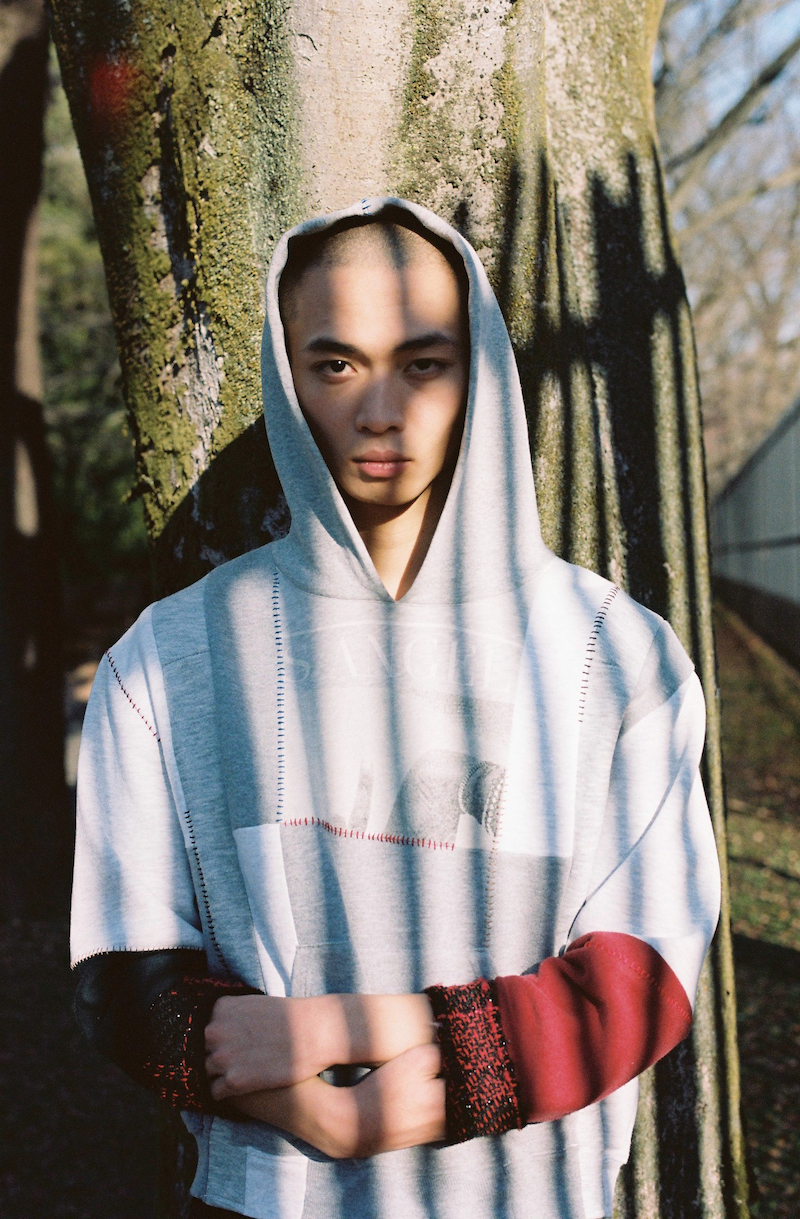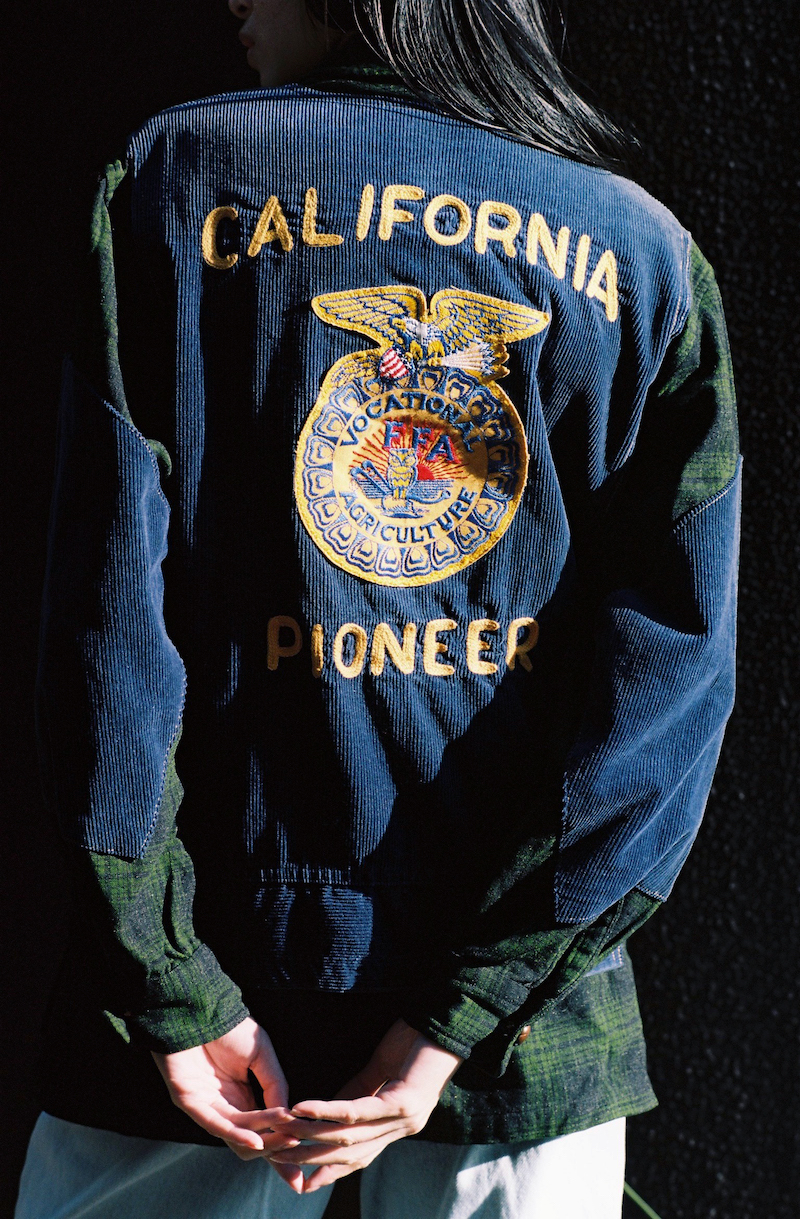REPURPOSE_YuumiARIA
The garments that form your collection are mainly men's items.
I mainly collect menswear that I can secure in certain quantities for mass production, but I collect one-of-a-kind garments as well. For this project, I combined one-of-a-kind garments with details from my stock.


How do you collect and store materials for the details?
When I’m remaking items, I keep and organize the different parts such as arms, body, pockets, buttons, etc. I try to use up the entire garment. I basically know which details go where in my mind, so I often think about the design from there.
You use a different technique for each item. What did you have in mind when you created them?
In this project, I created items that can be worn backwards and forwards or be detachable and worn separately. By incorporating various ideas into the details, I would like to propose a more flexible way of wearing clothes. Also, this time I tried to keep the unisex image throughout the collection, while simultaneously making the American casual items into a mode look, in terms of design.


What sparked your interest in menswear?
Originally, I was interested in what my own body didn’t have. Since women's bodies have more curves, they tend to have more three-dimensional items, and their approach to modeling is quite different from men's clothing. On the other hand, men’s clothing is often flat and focused on function, and I was attracted to such functional designs. Of course I have a womenswear perspective, but my approach to design is centered on a menswear perspective.
When it comes to the concept of menswear, I think you have a lot of experience from the men’s brand you worked for before. What sort of things did you learn?
That's right. I worked as a patternmaker for the first two years at the brand. There was a point in time where I decided to respond to the designer's one idea with three proposals. After doing this repeatedly, I became an assistant to the designer. After I started designing, I looked back on my time as a patterner and realized that my way of thinking was completely different.
What were the differences?
I think patternmakers often work backwards from the goal because they think about how to materialize the designer's ideas through trial and error. On the other hand, for designers, it is important to have a sense of "I want to do this", even if it means ignoring the process and customs. It's a feeling that when you go beyond your limits, you can make something great. I myself have decided to never say the word "impossible," and I have learned that the goal of a designer lies much further away.


When making clothes, there are two types of people: those who improvise, and those who design the finished product in their minds first and then make it. Which type do you think you are?
I am the type of person who improvises intuitively. In terms of what I just said, I want to create things with the mindset of a designer. Even for items for mass production, I think of the pattern after I make it. When I make new clothes, I think it is a process of turning 0 into 100, but for remade items, I think it is a process of turning something that is already 100 into another 100.
I understand that you make and fix remade items at the YUUMIARIA atelier store in Omotesando.
We don't just do hemming, but we fix the item while thinking of a design that suits each person. It may take some time, but it is possible to remake items other than YUUMIARIA products.


When creating items for remake or mass production, at what point do you consider them finished?
I usually let it rest. When I think it's done, I give it a bit of time and when I look at it with a different set of eyes and still think it's done, that's when I know it's finished.
I feel that there is an awareness of sustainability at the core of your brand. Is there anything that you would like to work on in the future?
We will continue to do what we can first, such as using up all the scraps we can find. I would like to start with small things and build up steadily.
Interview text_ SHINGO ISOYAMA
photography_ DAISUKE HAMADA
hair & makeup_ HAYATE MAEDA
model_ LAN / YUUKI TANII




